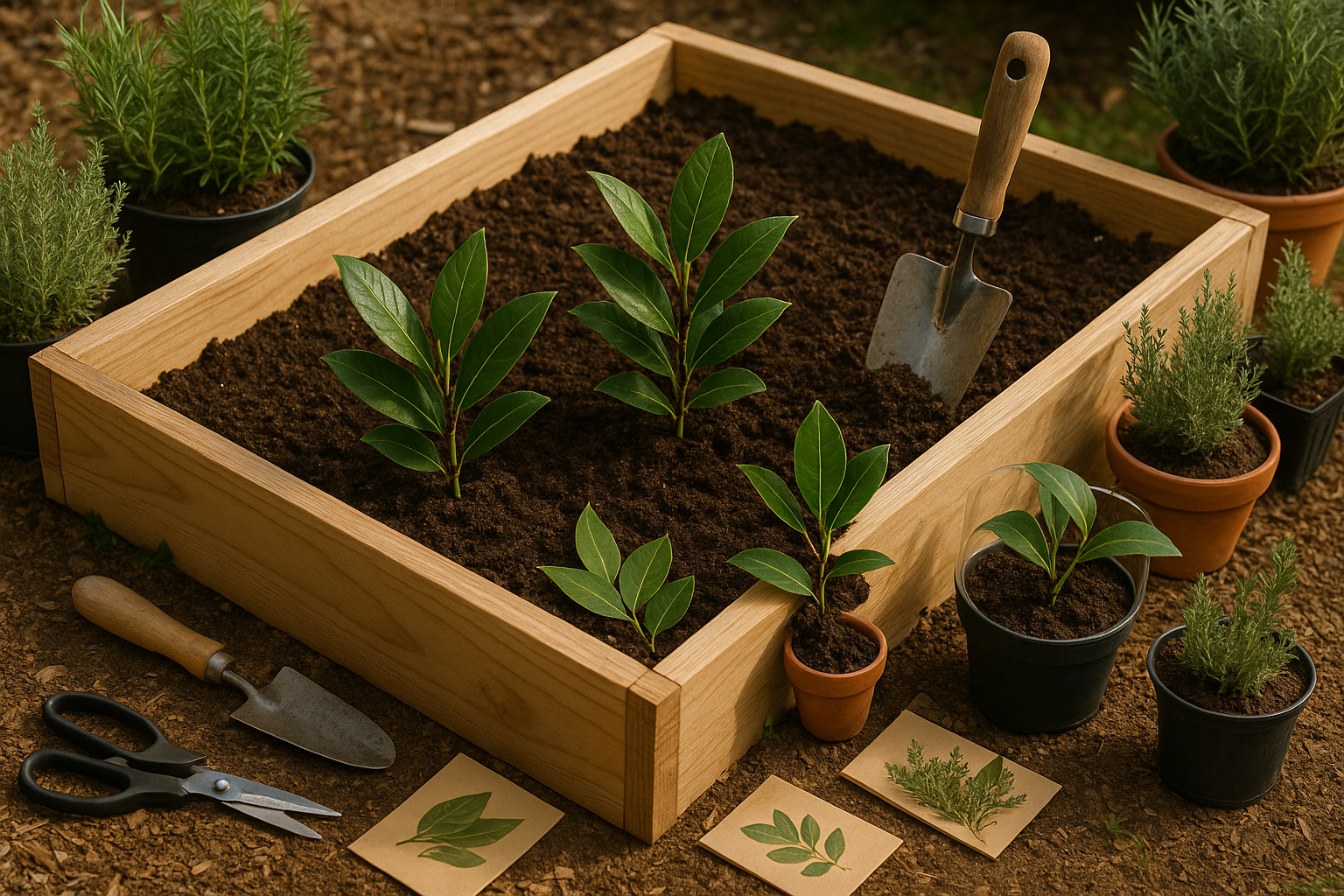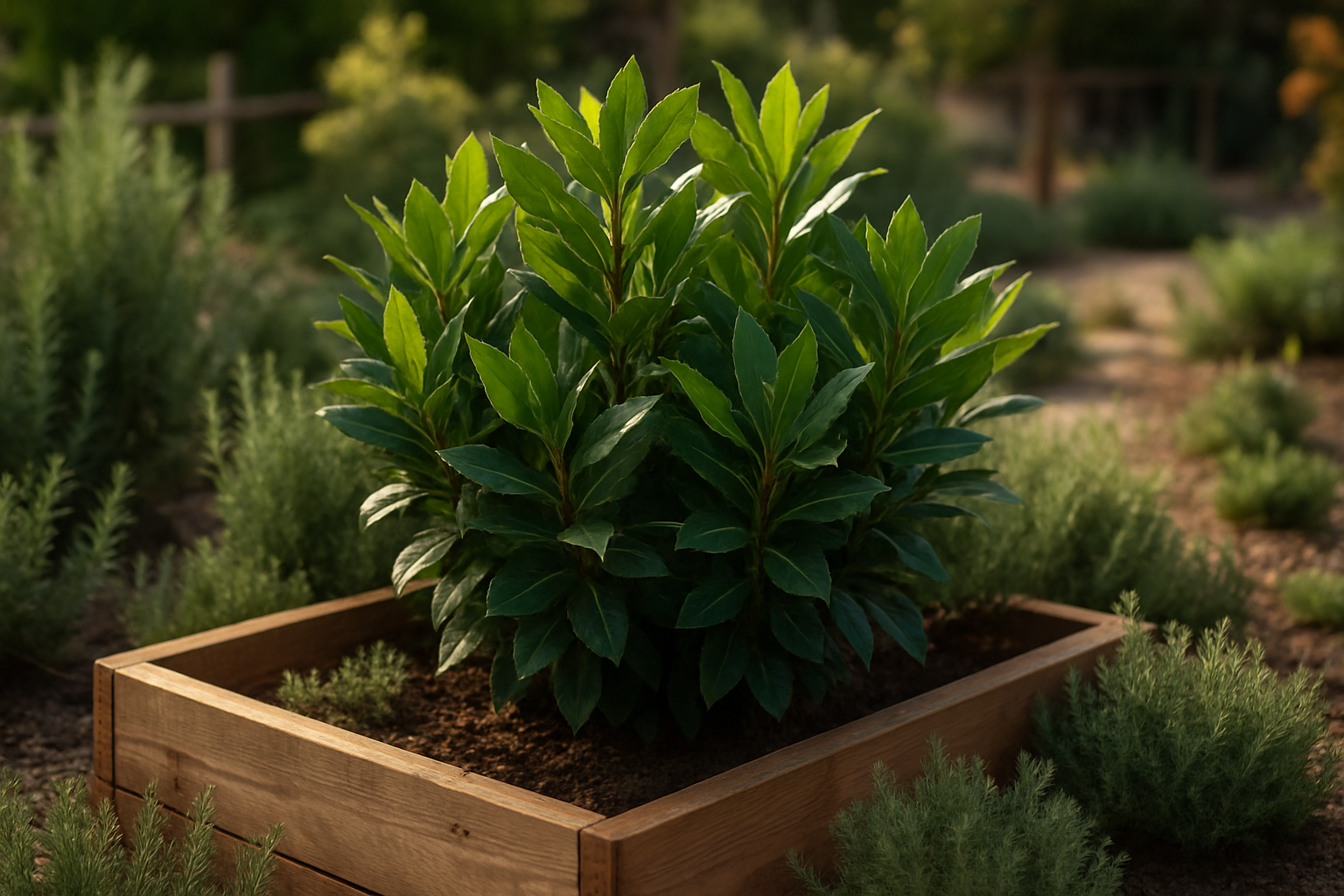Introduction
If you’ve ever wondered about the best way to grow herbs at home, you might have asked yourself if it’s possible to cultivate bay leaf in raised beds. Bay laurel, known for its aromatic leaves used in soups, stews, and countless Mediterranean dishes, is a beloved staple for both home cooks and gardening enthusiasts. But as a woody Mediterranean shrub, does it really thrive in the confined and often changing environments of a raised bed garden?
The short answer: yes, you can successfully grow bay leaf in raised beds—with the right preparation and ongoing care. This article will explore what makes bay laurel unique, dive into the specific needs it has when planted in raised beds, and offer practical tips drawn from real-world successes.
We’ll cover everything from optimal soil mixes and watering strategies to managing pests and winterizing your plant. So, whether you’re starting with a young sapling or hoping to move a container-grown bay outside, rest assured that with thoughtful planning, your raised bed can deliver robust, fragrant bay leaves for years to come.
Let’s dig into what it takes to make your raised bed a thriving home for this culinary favorite.
Understanding Bay Laurel

Bay laurel (Laurus nobilis) is a versatile evergreen shrub or small tree native to the sunny Mediterranean region. Outdoors, it can reach up to 30 feet tall under the right conditions, though it’s often pruned much smaller for home gardens or container growth.
With its glossy, aromatic leaves and dense foliage, bay laurel provides year-round greenery and structure, making it a popular choice for gardeners who want to keep their landscapes vibrant through all seasons. Its leaves are famous in the kitchen—just one or two can transform a soup, stew, or sauce with a deep, savory flavor. Whether fresh or dried, bay leaves are a pantry staple you can pick right from your own garden, ensuring natural, chemical-free herbs.
Beyond the kitchen, bay laurel adds elegance to pathways, patios, or formal gardens, especially when shaped into topiaries or hedges. It’s drought-tolerant, easy to maintain, and naturally pest-resistant, making it a smart choice for both beginner and experienced gardeners. Its evergreen habit means you’ll enjoy lush foliage no matter the season, and it fits beautifully in both traditional and modern landscapes.
For those with limited space, bay laurel grows well in pots—just remember to bring it indoors during cold climates, as it prefers mild winters. From culinary uses to visual appeal, bay laurel is a hardworking plant that delivers year after year.
Advantages of Growing Bay Leaf in Raised Beds
Growing bay leaf (bay laurel) in raised beds offers several key advantages that can significantly improve the health and productivity of your plant. One major benefit is improved drainage—bay laurel thrives in well-drained soil and can struggle in soggy or compacted ground, especially during rainy seasons. Raised beds allow you to control the soil mix, ensuring it’s light, fertile, and perfectly suited to the needs of this Mediterranean herb.
This control is especially helpful if your garden soil is heavy clay or drains poorly; planting in such conditions often leads to root rot or stunted growth. Additionally, raised beds warm up faster in spring, which is a real bonus in cooler climates where overwintering bay laurel can be challenging and the growing season is short. Since bay laurel is sensitive to frost, the warmer soil and better airflow around raised beds give your plant a stronger start and extra protection.
Accessibility is another advantage. Raised beds are easier to reach for pruning and harvesting, making maintenance less of a chore and more enjoyable—no more uncomfortable bending or kneeling. For urban gardeners or those with limited space, raised beds can be positioned in sunnier spots, away from structures that might cast shade over in-ground plants.
In short, compared to traditional in-ground planting, raised beds offer more control, easier care, and a healthier environment for bay leaf. Whether you’re dealing with challenging soil, tricky weather, or simply want a thriving culinary garden right at your fingertips, raised beds are an excellent choice.
How to Plant Bay Laurel in Raised Beds

When planting bay laurel in raised beds, start by choosing a location that receives at least six hours of direct sunlight daily, as bay laurel thrives in bright conditions. If possible, pick a spot sheltered from strong winds—placing your bed near a wall or fence can help protect the leaves from scorch or breakage.
Next, fill your raised bed with well-draining, nutrient-rich soil. A good mix includes equal parts compost, peat moss, and coarse sand, which keeps the roots healthy and prevents waterlogging.
When it’s time to plant, you can start with seeds, though most gardeners find nursery-grown young plants easier and faster. If planting seeds, sow them about half an inch deep, but keep in mind that germination may take several months. For young plants, dig a hole as deep as the root ball and twice as wide, spacing each bay laurel at least three feet apart to allow for airflow and room to grow—bay laurels can become quite bushy over time!
Using containers within your raised bed is another smart option. Bay laurels grow slowly and do well in pots, so placing a container inside the bed helps manage space and makes it easier to move the plant indoors during cold weather.
Companion Planting Tips
Consider planting herbs like rosemary, sage, or thyme nearby—these Mediterranean herbs share similar light and soil needs and can help repel pests naturally. Avoid moisture-loving neighbors such as mint or basil, as their water requirements differ.
With the right location and a bit of planning, your raised bed can become a thriving, aromatic herb garden with bay laurel as the star.
Bay Laurel Care in Raised Beds
Bay laurel is a resilient and rewarding herb to grow in raised beds, but it thrives best with thoughtful year-round care. Start by watering deeply whenever the top inch of soil feels dry—bay prefers consistent moisture but dislikes soggy roots. Make sure your raised bed has good drainage and avoid overwatering, especially during cooler months.
To feed your bay laurel, mix compost or well-rotted manure into the soil in spring, and top-dress with a balanced, slow-release fertilizer every few months throughout the growing season. Periodic soil amendments like compost not only nourish the plant but also keep the soil loose and aerated, helping to prevent root rot, to which bay laurel is somewhat susceptible in heavy, stagnant soils.
For pruning, use sharp, clean shears to trim new shoots throughout the growing season. This keeps your plant bushy and compact, encourages fresh growth, and provides fragrant leaves for cooking. Remove dead, damaged, or crossing branches promptly to improve air circulation, which is crucial for preventing fungal diseases. Each autumn, cut back stems just enough to tidy the plant before winter arrives.
If you live in a region where winters drop below freezing, bay laurel will need extra care: mulch heavily over the root zone to insulate the roots and, if possible, wrap the plant or move the entire raised bed to a more sheltered spot. In areas with harsh winters, consider growing bay laurel in a large container set into the raised bed so you can move it indoors as needed—just be sure to transition it gradually to avoid shock.
With consistent, attentive care, your bay laurel will thrive and provide aromatic leaves for years to come.
Harvesting and Using Homegrown Bay Leaves
For the best flavor, harvest bay leaves from your Laurus nobilis plant during late summer, when the leaves are deep green, leathery, and fully mature. Younger leaves can be bitter and lack the rich aroma of older ones. Use sharp, clean scissors to snip individual leaves, taking care not to strip entire branches to keep your plant healthy.
After harvesting, rinse the leaves to remove any dust and let them air dry on a paper towel in a single layer, away from direct sunlight. Full shade and good airflow help preserve their flavor and color. Once the leaves are crisp and brittle—usually after 1–2 weeks—transfer them to an airtight glass jar and store in a cool, dark place to prevent the loss of essential oils.
Be sure to harvest only from Laurus nobilis, as other ornamental or wild bay trees may be toxic and unsafe for culinary use. In the kitchen, add whole dried leaves to soups, stews, rice, or sauces early in the cooking process to impart a subtle, savory note. Remember to remove the leaves before serving, as they remain tough even after cooking.
Try using a freshly dried leaf in your next pasta sauce or slow-cooked roast for a delicious, garden-fresh upgrade.
Troubleshooting & Common Questions
It’s normal to face a few bumps when growing bay laurel in raised beds, but most issues have simple fixes. Pests like scale insects and aphids sometimes target new leaves—use a gentle spray of water or insecticidal soap if you notice sticky residue or tiny bugs.
Diseases such as powdery mildew often appear as white patches on leaves. To prevent this, boost airflow by spacing plants well and avoid overhead watering to keep moisture off the foliage.
If your bay laurel grows slowly or drops leaves, check that the soil drains well and isn’t too wet, as soggy roots cause stress. Bay laurel also prefers a sunny spot—less sun means slower growth. Don’t forget to feed with a balanced, slow-release fertilizer in spring.
If you’re experiencing persistent issues, snap a photo and visit a local garden center or your county extension office for advice. For detailed care guides, the Royal Horticultural Society and your state’s cooperative extension website are excellent resources.
Remember, every gardener faces hiccups—patience and observation are key. With the right tweaks, your bay laurel will bounce back in no time.
Conclusion
Bay laurel can truly thrive in raised beds when given the right care—ample sunlight, good drainage, and regular pruning are all it takes to enjoy a lush, aromatic plant at home. Growing your own bay laurel means always having fresh leaves on hand for cooking, plus the satisfaction of nurturing a classic Mediterranean herb.
If you’re new to raised bed gardening, don’t stop at bay laurel; try mixing in other favorites like basil or thyme for a more diverse and productive herb garden. Raised beds make experimenting easy, so let your gardening creativity flourish!
